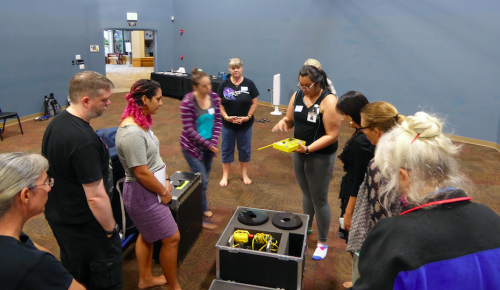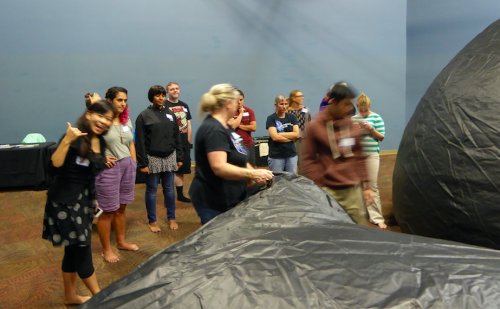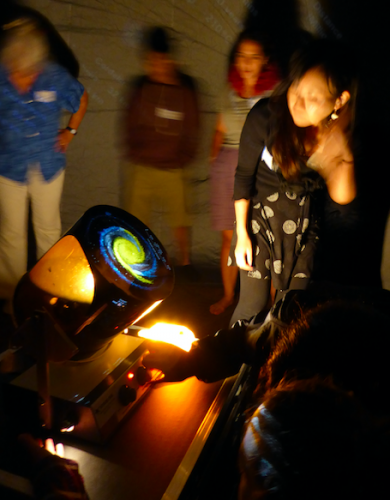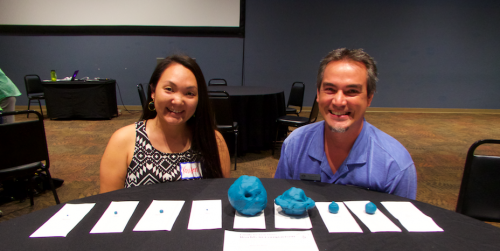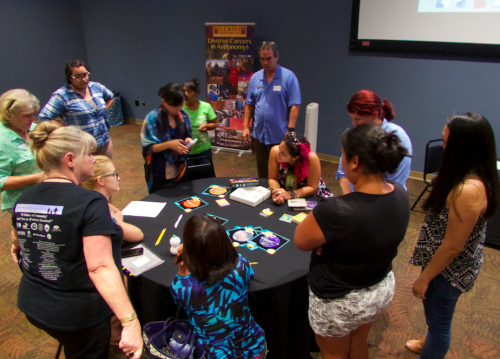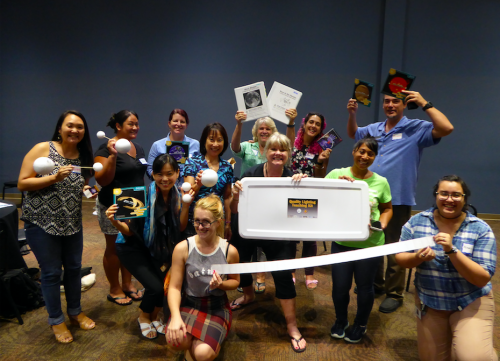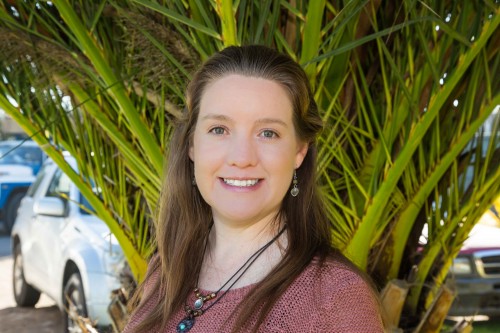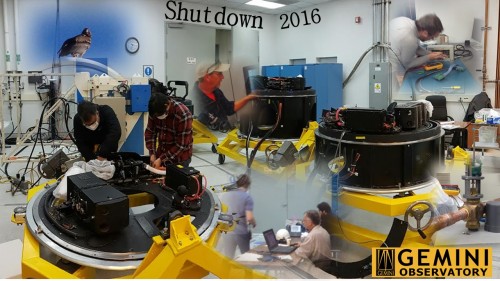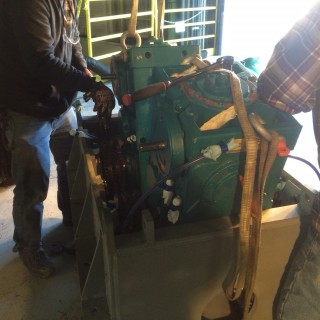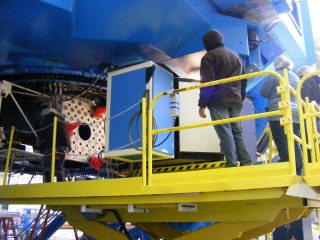- Date: 7 Oct 2016
- Comments: (0)
- Categories: For Everyone, Human Interest, Outreach
Gemini North Holds StarLab Training at ʻImiloa Astronomy Center
Both Gemini sites, North and South, have portable planetariums available for loan to schools and community groups (as posted previously). Gemini’s StarLab Portable Planetarium is a great interactive tool to teach a variety of Astronomy lessons about topics such as: the Solar System, the Northern and Southern star fields, and Hawaiian navigational star lines. Once educators have completed our two-hour StarLab training, they too can take students on adventures through the cosmos without leaving their classrooms.
Booking Info
If you are interested in borrowing the StarLab or booking a presentation, please visit the Gemini North or South StarLab webpages for contact information. You can also keep up to date on all of our upcoming events and trainings through our website. Here are some highlights from our most recent Gemini North StarLab training at the ‘Imiloa Astronomy Center on Monday, October 3rd!
Training Highlights
The focus of this training is to teach educators the logistics of setting up, operating and taking down StarLabs. Geminiʻs Public Information and Outreach staff, Alexis Acohido, led 12 participants in Monday’s training. Once the group was comfortable operating the equipment, Alexis took trainees inside the dome to share her favorite planetarium curriculum.
Alexis showed everyone how the solar system cylinder tells the story of our cosmic neighborhood. “Just like we have an address: we live in a house, on a street, in a town, on the Big Island of Hawaii, we also have a cosmic address. We live on the Earth, in our Solar System, in the Milky Way galaxy.” Each trainee had time to operate the cylinder as well as getting answers to questions about giving their own StarLab presentations.
The StarLab Portable Planetarium is just one of the many resources Gemini has available to share astronomy with the general public. Mahalo to ‘Imiloa Astronomy Center for hosting, Alexis Acohido for leading and our participants for their dedication to sharing the wonders of the universe!

Janice Harvey of Gemini (right) recalls the joys and surprises that come with presenting planetarium shows.

